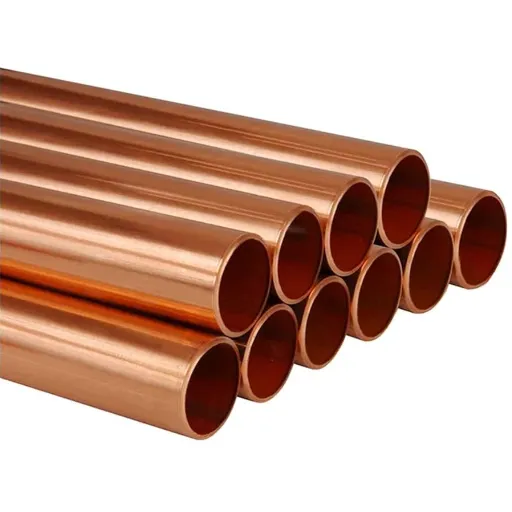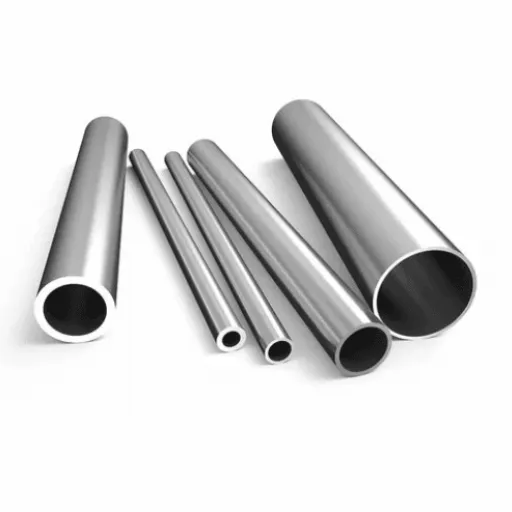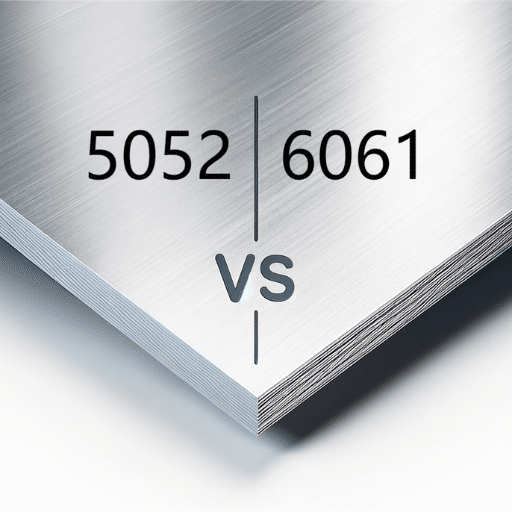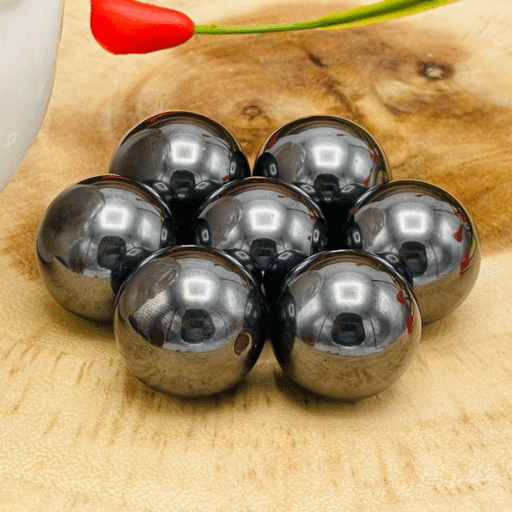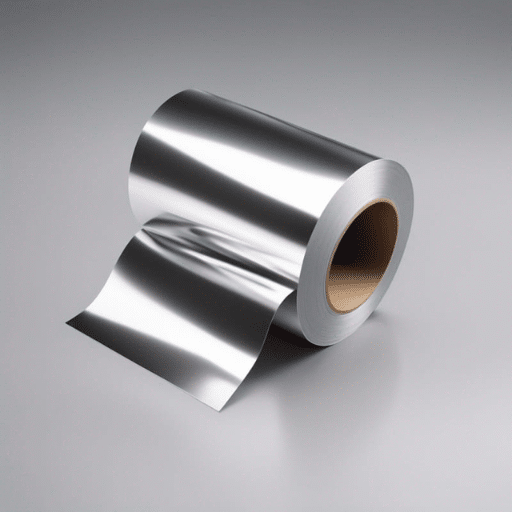Stainless steel has enjoyed ample recognition for its durability, conformity to myriad applications, and corrosion-resistant properties. But how would you define hardness to this metal and divide the properties that differentiate one grade from another? For instance, 316 stainless steel, a common grade, possesses unique characteristics that suit it for specific uses, while other grades of stainless steel suit their appropriateness in a different way. This article will look into the hardness of stainless steel, compare it with other grades of stainless, and try to understand why knowing these variations is essential to choosing a material for your application.
Introduction to Stainless Steel
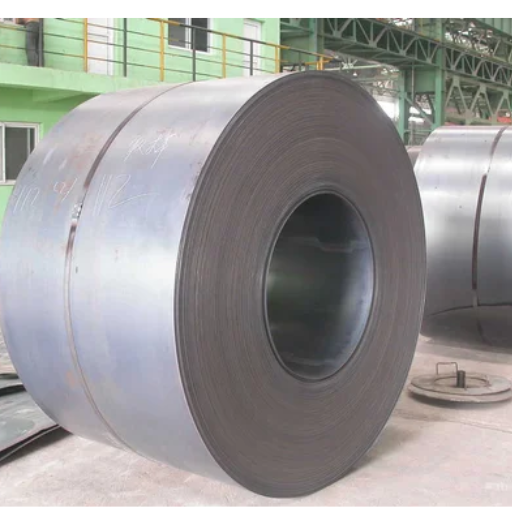
Stainless steel is a myriad of alloys that are capable of being treated as hardening metals, mainly made of iron, carbon, and chromium, the last element being responsible for its corrosion resistance. This alloy finds widespread industrial applications due to its strength, versatility, and ease of maintenance. This layer is predominantly sheer stainless steel surface oxide, formed by chromium, which is corrosion-free. Stainless steel grades differ for a particular application, such as the one used in construction, surgical instruments, or kitchenware. Due to its property combination, it makes a dependable candidate for industrial and general use.
What is Stainless Steel?
Stainless steel is a durable corrosion-resistant alloy. It is basically iron, chromium, other metals, and trace impurities, such as nickel, molybdenum, and carbon. The main constituent is chromium, ranging between 10.5 to 30%, which gets converted into a thin, invisible, and self-healing oxide layer on the surface that prevents the material from rusting and corroding.
Key Components of Stainless Steel:
- Iron: Base metal providing structural foundation
- Chromium: 10.5-30% content for corrosion resistance
- Nickel: Enhances ductility and corrosion resistance
- Molybdenum: Improves resistance to chloride environments
- Carbon: Affects hardness and strength properties
Types of Stainless Steel
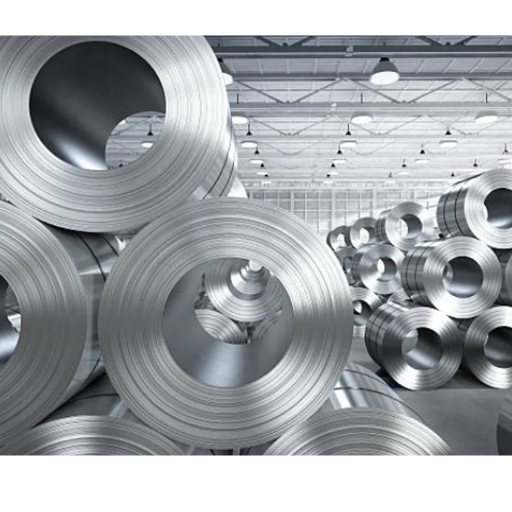
Various kinds of stainless types can be mainly divided into categories based on their specific properties for various applications. The main types include:
| Type | Key Characteristics | Common Grades | Typical Applications |
|---|---|---|---|
| Austenitic | Non-magnetic, excellent corrosion resistance, easily formed | 304, 316 | Kitchenware, medical devices, marine environments |
| Ferritic | Magnetic, lower cost, moderate corrosion resistance | 430 | Automotive exhaust systems, decorative trim |
| Martensitic | High strength and hardness, wear resistant | 410, 420 | Cutlery, surgical instruments, tooling |
| Duplex | High strength and corrosion resistance | 2205, 2507 | Chemical processing, oil and gas industries |
| Precipitation-Hardening | Very high strength through heat treatment | 17-4 PH | Aerospace, military applications |
Austenitic Stainless Steel
Being the most commonly used category, austenitic stainless steels offer extremely good resistance to corrosion owing to their high chromium and nickel content. They are non-magnetic and easily formed and welded. Commonly, grades 304 and 316 are utilized for kitchenware, medical devices, and marine environments.
Ferritic Stainless Steel
These steels are magnetic and also less expensive because of a low nickel content, when compared to the austenitic types. Ferritic stainless steels, such as grade 430, are used where moderate corrosion resistance is sufficient, as in automotive exhaust systems and decorative trim.
Martensitic Stainless Steel
These stainless steels enjoy their classical fame for the high strength and hardness. They are used where wear resistance is required for instance in cutlery, surgical instruments, and tooling. 410 and 420 stainless steel belong to this classification but have lesser corrosion resistance than the other types.
Duplex Stainless Steel
These possess the strength and corrosion resistance higher than either austenitic or ferritic stainless steels, bringing to phase the highest corrosion resistance and strength of both grades. They are best suited for the harsh environments found in chemical processing and oil and gas industries. The common grades include 2205 and 2507.
Precipitation-Hardening Stainless Steel
These steels acquire very high strength and hardness from heat treatments. They are predominantly used in aerospace and military applications, where durability and performance under stress are the critical factors.
Common Applications of Stainless Steel
Stainless steel is a versatile metal with numerous applications across a great many industries. Some typical considerations include:
- Construction and Architecture: Structural members, roofing, and cladding for durability and modern aesthetics
- Automotive and Transportation: Exhaust systems, trim, and structural components for corrosion resistance
- Food and Beverage Industry: Processing equipment, tanks, and piping systems for sanitary applications
- Medical Equipment: Surgical instruments and hospital furniture for sterile environments
- Energy: Oil and gas processing, nuclear reactors, and renewable energy systems
- Consumer Goods: Kitchen appliances, cutlery, and cookware for everyday use
Properties of Stainless Steel

Stainless steel is a much-valued metal because of its durability, corrosion resistance, and excellent strength-to-weight ratio. It is composed mostly of iron and chromium, with other alloying elements added, chromium being among the key substances responsible for the metal’s corrosion resistance. It is one of the most recyclable metals, making it an environmentally sustainable choice across many industries.
Hardness of Stainless Steel
Hardness is one of the major characteristics of stainless steel, which defines its resistance to deformation and wear, making it suitable for a variety of applications, including electric vehicles (EVs). Stainless steel hardness is tested on one or more scales, including Brinell, Rockwell, and Vickers; different grades and heat treatments can produce very widely ranging results.
Hardness Comparison by Grade:
- 304 & 316: Balanced hardness (~70 HRB) and corrosion resistance
- 440C: Much higher hardness levels for heavy-duty components
- Martensitic grades: Can reach 50-60 HRC with proper heat treatment
Corrosion Resistance of Stainless Steel
Stainless steel bears a name for excellent corrosion resistance stemming from the chromium that is present within it. A chromium content of at least 10.5% reacts with the oxygen from the atmosphere to form a thin and passive chromium oxide film that covers the surface. Such a passive film acts as a protective shield, preventing further oxidation and corrosion of the surface to rust or any other form of corrosion.
Mechanical Properties of Stainless Steel
Throughout history, stainless steel was in high demand around the world for its promise of an array of illustrious mechanical properties that rendered it among the most versatile materials in industries. The tensile strength ranges between 515 and 827 MPa, dependent on grade, which imparts sufficient durability to resist enormous mechanical stresses.
Measuring Hardness of Stainless Steel
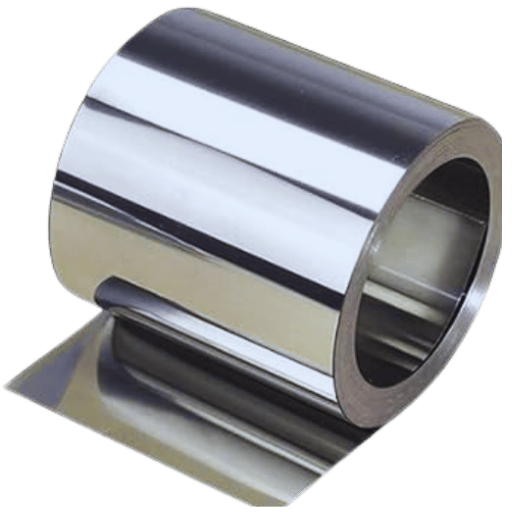
Hardness measuring of stainless steel employs standardized methods such as Rockwell, Vickers, or Brinell hardness methods. These methods apply a definite force to the surface of the tested material using a particular indenter and measure the material’s ability to resist deformation.
Hardness Scales Used
| Scale | Indenter Type | Application | Advantages |
|---|---|---|---|
| Brinell (BHN) | Steel or carbide ball | General hardness testing | Large indentation area, good for heterogeneous materials |
| Vickers (HV) | Diamond pyramid | Micro-level precision testing | High precision, suitable for thin materials |
| Rockwell (HR) | Diamond cone or steel ball | Quick surface hardness | Fast measurement, direct reading |
Testing Methods for Hardness
The hybridization of two or more hardness testing methods, like those of Vickers and Rockwell, renders the material properties through two different estimation means from one system. While immediate hardness on a surface, especially determining its usability, is rendered by Rockwell testing; such information may be of little assistance in future use if the material needs further testing at higher micro-level precision, which is what the Vickers testing method provides.
Interpreting Hardness Test Results
Test results for hardness give essential clues into resistance to deformation, wear, or mechanical failure that are important for engineering applications. Interpreting these results requires one to know the relation that exists between test values and the materials considered for use. For example, a higher hardness value usually means the material will resist wear well and can therefore be subjected to conditions of high friction.
Common Questions about Durability
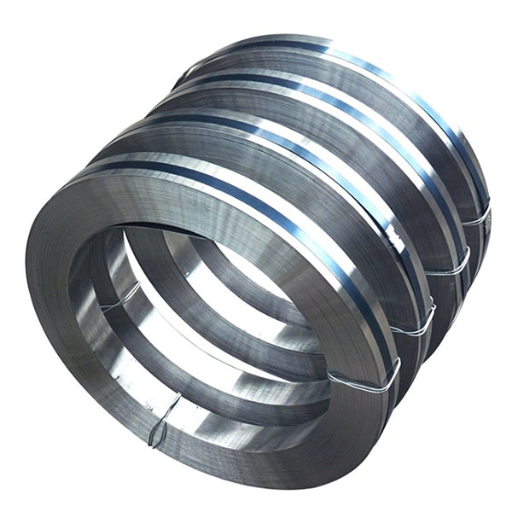
How Durable is 316 Stainless Steel?
316 stainless steel is famed for its long-lasting nature. The composition contains chromium, nickel, and molybdenum: all providing higher resistance to corrosion in adverse conditions such as marine environments or chlorides. Recent information tells us that 316 stainless steel has lately been affording the best resistance to pitting corrosion and crevice corrosion, among other considerations, and as such, it is much sought after when considering saltwater or chemical processing industry applications.
Common Myths about Stainless Steel Hardness
Myth 1: Higher hardness always means better corrosion resistance.
Reality: Greater hardness may result from alloying or heat treatment, but these mechanical hardening methods don’t guarantee corrosion resistance. For example, types 304 and 316 are prized for excellent corrosion resistance yet are relatively soft compared to ferritic or martensitic grades like 440C.
Myth 2: All stainless steel grades are heat-treatable.
Reality: Only martensitic and precipitation-hardening stainless steels can be heat treated, while austenitic grades (such as 304 and 316) can only be hardened through cold-working methods.
Longevity of Stainless Steel Fasteners
The offset or difference in longevity of stainless steel fasteners between the highest quality and lower grades rests on environmental exposure and application. High-grade stainless steel fasteners, such as those made from 304 or 316 grade stainless steel, may last several decades, even a lifetime, under good environmental conditions because of their superior corrosion resistance and durability.
Tips for Working with Stainless Steel
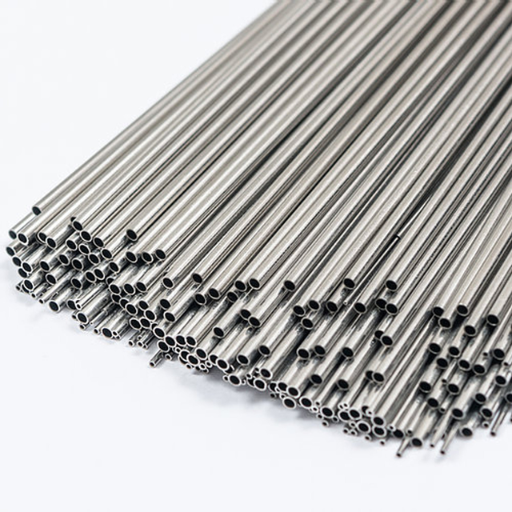
Choosing the Appropriate Grade of Stainless Steel
Select the suitable grade of stainless steel depending on the environment. For instance, 304-grade stainless steel is used for indoor applications or applications with low corrosion hazard, while 316-grade stainless steel finds its use in marine environments because of its superior corrosion-resistance ability.
Use the Correct Tools for Cutting and Machining
The tools used when working on stainless steel should be kept clean to avoid contamination and marring of steel surfaces. High-speed steel or carbide tools may be employed in cutting and machining stainless steel as they minimize heat buildup that could cause either deformation or weakening of the material.
Avoid Cross-contamination
Ensure that stainless steel only uses its own tools and works in a separate area to avoid being contaminated by other metals such as carbon steel. Contamination causes surface defects and predisposes the steel to corrosion.
Follow the Correct Cleaning and Maintenance Practices
This is for the prevention of corrosion of stainless steel from regular cleaning practices. Use non-abrasive cleaning agents; strictly avoid chemicals like hydrochloric acid that can destroy the oxide layer. In the various uses, regular maintenance will ensure the material can last for a long time.
Avoid Too Much Heat During Welding
Too much heat brings out unattractive discolouration in stainless steel and reduces its strength; controlled heat therefore must be employed with great care to prevent warping, while further treatments should follow welding-welding and passivation-being able to restore the protective chromium oxide layer for corrosion resistance.
Best Practices in Manufacturing
- Minimize Material Waste: Use precision machining and lean manufacturing techniques to optimize material usage
- Deploy Advanced Quality Control Measures: Implement real-time monitoring and AI-powered analytics for consistent product standards
- Go Green: Adopt energy-efficient machinery, renewable energy sources, and recycling programs for sustainability
Maintenance Tips for Stainless Steel Products
- Regular Cleaning: Use warm water and mild detergents, avoiding harsh chemicals or abrasive cleaners
- Avoid Chloride Exposure: Rinse well after exposure to saltwater or chloride-containing cleaning agents
- Polishing: Use special stainless steel polish or microfiber cloth to maintain brightness
- Avoid Surface Scratches: Use soft, non-abrasive tools and avoid dragging heavy objects across surfaces
- Environmental Watch: Ensure proper ventilation and consider rust-preventive coatings in harsh environments
References
-
ScienceDirect – Stainless Steel Overview: Provides a detailed overview of different types of stainless steel, including their strength and ductility characteristics.
-
ScienceDirect – Experimental Study on the Mechanical Properties of Stainless Steel: Discusses the mechanical properties of austenitic and ferritic stainless steels, including their yield strengths and limitations.
-
IJERA – Stainless Steel as a Structural Material: State of Review: Explores the use of stainless steel in structural applications, focusing on its mechanical properties and advantages.
-
Nickel Institute – Design Guidelines for the Selection and Use of Stainless Steels: Offers comprehensive guidelines on the selection and use of stainless steels, including their hardness and toughness under various conditions.
Frequently Asked Questions (FAQ)
How Hard is 304 Compared to Other Alloys?
304 stainless steel has a reputation for having good hardness and strength. It usually has a Rockwell hardness value of approximately 70 HRB, which permits its use for many engineering applications. When speaking of hardness, 304 stainless steel is the same with 316 stainless and distinction is made in corrosion resistance due to nickel levels. It contains less nickel than 316 stainless.
What is the Hardness of 316 Stainless Steel?
316 stainless steel is highly regarded for its corrosion resistance, especially under marine conditions. It has more or less the same hardness as 304-grade stainless steel, with a nominal Rockwell hardness of 70 HRB. The 316-grade stainless steel, with its molybdenum content, provides higher levels of strength and toughness, so it is used for more demanding applications.
How Does the Hardness of Stainless Steel Compare to Carbon Steel?
Stainless steel ordinarily has less hardness than high carbon steels that may reach Rockwell hardnesses of above 60 HRC, depending on the heat treatment. Carbon steels are used more generally due to their cost-effectiveness, but stainless steels far outrank the former in corrosion resistance and degradation.
What Are the Mechanical Properties of Martensitic Stainless Steel?
Martensitic stainless steels such as 420 stainless steel are hard steels that commonly reach hardness levels of 50-60 HRC. Such steels are used in activities where very high wear resistance is required such as knife blades, surgical instruments, etc. The hardness of the steel can be improved yet further through heat treatment.
What is the Importance of Corrosion Resistance in Stainless Steel Alloys?
The resistance to corrosion is among the foremost attributes that a stainless steel alloy can have, thus enabling its applications in different environments-largely exposed to moisture and chemicals. High chromium and nickel content give alloys like 304 and 316 their ability to resist rust and corrosion, so much superior to that given by normal steel.
What is the Comparison of Hardness of Duplex Stainless Steel?
Duplex stainless steel has properties of both austenitic and ferritic stainless steels, giving it high strength and hardness. It generally exhibits a Rockwell hardness of about 30-40 HRC and has application in areas where high strength and resistance to stress corrosion cracking are required.
What Effect Do Nickel and Chromium Have on the Hardness of Stainless Steel?
Nickel and chromium are the major constituents to define stainless steel hardness and corrosion resistance. While nickel contributes to toughness and ductility, chromium acts against oxidation and corrosion of stainless steel alloys. That provides excellent mechanical properties for stainless steel to perform.
Can They Rust and Does It Affect the Hardness?
Even though considered to be resistant to corrosion, stainless steel can rust under certain conditions, especially when it has been low in chromium concentration or if it has been surface-contaminated. Rusting would inhibit hardness and structural integrity of the material, threatening diminution of performance over time if not properly maintained.
What is the Hardness of Precipitation-Hardening Stainless Steels?
Precipitation-hardening stainless steels, such as 17-4 PH, can reach tremendous hardness of more than 40 HRC, after undergoing an appropriate heat treatment. These steels are for high-strength and corrosion resistance requirements, which make them suitable for aerospace and military applications.

